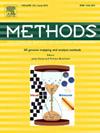Deepstack-ACE:一个基于深度堆栈的集成学习框架,用于加速发现ACE抑制肽。
IF 4.2
3区 生物学
Q1 BIOCHEMICAL RESEARCH METHODS
引用次数: 0
摘要
准确鉴定血管紧张素- i转换酶(ACE)抑制肽对于理解肾素-血管紧张素系统的主要调控因子以及为开发新的潜在药物提供指导至关重要。鉴于固有的实验复杂性,使用计算方法进行硅肽鉴定对于促进ACE抑制肽的高通量表征是必不可少的。在本文中,我们提出了一种新的基于深度堆叠的集成学习框架,称为Deepstack-ACE,以精确识别ACE抑制肽。在Deepstack-ACE中,输入的肽序列被输入到word2vec嵌入技术中生成序列表示。然后,利用这些表征训练长短期记忆、卷积神经网络、多层感知器、门控递归单元网络和递归神经网络五种强大的深度学习方法,构建基分类器。最后,根据所选基分类器的最佳组合,构建优化后的叠加模型。基准实验表明,与基础分类器和几种传统机器学习分类器相比,Deepstack-ACE对ACE抑制肽的识别更加准确和稳健。值得注意的是,在独立检验中,我们提出的模型显著优于目前最先进的方法,平衡精度为0.916,灵敏度为0.911,马修斯相关系数得分为0.826。此外,我们为Deepstack-ACE开发了一个用户友好的web服务器,可以在https://pmlabqsar.pythonanywhere.com/Deepstack-ACE上免费获得。我们期望我们提出的Deepstack-ACE模型能够提供更快、更合理准确的ACE抑制肽鉴定。本文章由计算机程序翻译,如有差异,请以英文原文为准。
Deepstack-ACE: A deep stacking-based ensemble learning framework for the accelerated discovery of ACE inhibitory peptides
Identifying angiotensin-I-converting enzyme (ACE) inhibitory peptides accurately is crucial for understanding the primary factor that regulates the renin-angiotensin system and for providing guidance in developing new potential drugs. Given the inherent experimental complexities, using computational methods for in silico peptide identification could be indispensable for facilitating the high-throughput characterization of ACE inhibitory peptides. In this paper, we propose a novel deep stacking-based ensemble learning framework, termed Deepstack-ACE, to precisely identify ACE inhibitory peptides. In Deepstack-ACE, the input peptide sequences are fed into the word2vec embedding technique to generate sequence representations. Then, these representations were employed to train five powerful deep learning methods, including long short-term memory, convolutional neural network, multi-layer perceptron, gated recurrent unit network, and recurrent neural network, for the construction of base-classifiers. Finally, the optimized stacked model was constructed based on the best combination of selected base-classifiers. Benchmarking experiments showed that Deepstack-ACE attained a more accurate and robust identification of ACE inhibitory peptides compared to its base-classifiers and several conventional machine learning classifiers. Remarkably, in the independent test, our proposed model significantly outperformed the current state-of-the-art methods, with a balanced accuracy of 0.916, sensitivity of 0.911, and Matthews correlation coefficient scores of 0.826. Moreover, we developed a user-friendly web server for Deepstack-ACE, which is freely available at https://pmlabqsar.pythonanywhere.com/Deepstack-ACE. We anticipate that our proposed Deepstack-ACE model can provide a faster and reasonably accurate identification of ACE inhibitory peptides.
求助全文
通过发布文献求助,成功后即可免费获取论文全文。
去求助
来源期刊

Methods
生物-生化研究方法
CiteScore
9.80
自引率
2.10%
发文量
222
审稿时长
11.3 weeks
期刊介绍:
Methods focuses on rapidly developing techniques in the experimental biological and medical sciences.
Each topical issue, organized by a guest editor who is an expert in the area covered, consists solely of invited quality articles by specialist authors, many of them reviews. Issues are devoted to specific technical approaches with emphasis on clear detailed descriptions of protocols that allow them to be reproduced easily. The background information provided enables researchers to understand the principles underlying the methods; other helpful sections include comparisons of alternative methods giving the advantages and disadvantages of particular methods, guidance on avoiding potential pitfalls, and suggestions for troubleshooting.
 求助内容:
求助内容: 应助结果提醒方式:
应助结果提醒方式:


